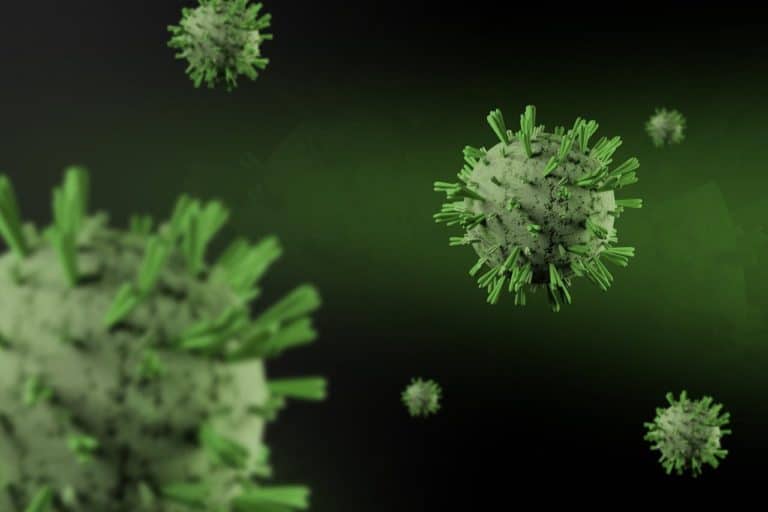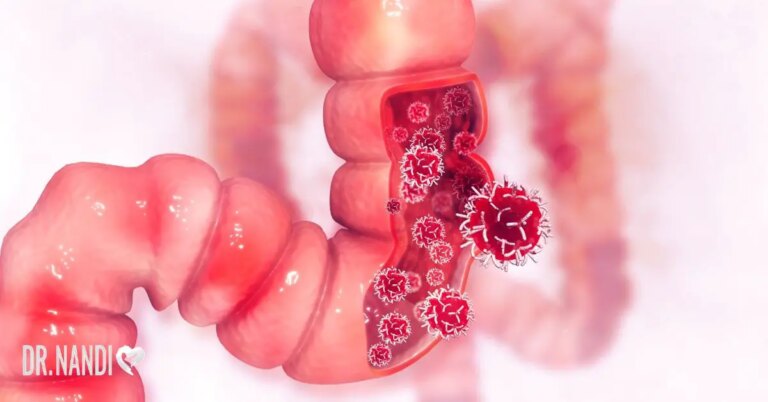When pain strikes, the first instinct is often to reach for an over-the-counter pill. But pain doesn’t just mask itself—it’s your body’s signal that something deeper is happening. Whether caused by inflammation, injury, or chronic illness, pain can interfere with your quality of life.
While medications can be useful, they often bring side effects and long-term risks. That’s why more people are turning to natural remedies—many of which have been used for centuries and are supported by modern research. Some of the best solutions may already be in your pantry.
The Science of Pain and Inflammation
Pain is not just a symptom—it’s part of the body’s complex communication system. Specialized nerve fibers, called nociceptors, detect harmful stimuli like heat, pressure, or chemical changes. These signals travel through the spinal cord to the brain, where they are interpreted as pain. This process is designed to protect you from harm, but it can become problematic when it persists longer than necessary.
Inflammation is one of the most common triggers for pain. When tissues are injured or stressed, the immune system releases signaling molecules called cytokines and prostaglandins. These chemicals increase blood flow to the area, attract white blood cells, and sensitize nerve endings—causing the familiar sensations of swelling, heat, and pain. While short-term inflammation is essential for healing, chronic inflammation keeps these pathways switched on, leading to ongoing discomfort and tissue damage (Medzhitov, 2008).
Another key factor in how pain is experienced is central sensitization. This occurs when the nervous system becomes overly responsive, amplifying pain signals even in response to mild or non-harmful stimuli. Conditions like fibromyalgia and chronic migraine are linked to this phenomenon (Woolf, 2011). Central sensitization helps explain why some people experience pain disproportionate to the underlying injury.
Additionally, pain is influenced by biochemical imbalances beyond inflammation alone. For instance, oxidative stress—caused by an excess of free radicals—can damage nerve cells and worsen painful conditions like neuropathy. Research also shows that imbalances in neurotransmitters such as serotonin and dopamine affect how the brain processes pain, connecting physical discomfort to mood and emotional health (Bannister & Dickenson, 2016).
In short, pain is shaped by a combination of nerve signaling, immune responses, oxidative stress, and brain chemistry. Understanding these mechanisms highlights why natural approaches that reduce inflammation, calm nerve activity, and restore biochemical balance can be powerful tools in managing discomfort.
12 Kitchen Remedies Backed by Science
Many common foods and spices do more than just add flavor—they contain compounds that actively influence how your body perceives and manages pain. These ingredients, long used in traditional medicine, are supported by modern research for their ability to reduce inflammation, calm nerve sensitivity, and promote healing. Here’s a closer look at 12 evidence-backed kitchen remedies that can help you find natural relief.
1. Turmeric: The Golden Healer
Turmeric is more than just a spice—it contains curcumin, which interacts with multiple inflammatory pathways. Beyond joint stiffness, studies show it can help ease pain from long-standing conditions where inflammation plays a role. Cooking with turmeric daily or brewing it into tea allows for steady intake without relying on supplements.
2. Ginger: Rooted in Relief
Ginger works by reducing the production of chemicals that trigger pain. It’s especially effective for muscle recovery after physical activity and can ease discomfort linked to menstrual cycles. Fresh ginger slices steeped in hot water or grated into meals provide consistent support.

3. Garlic: Fighting Pain and Infection
Garlic compounds influence circulation and immune activity, which in turn can ease discomfort linked to infections and inflammation. Crushing garlic before cooking helps release its active compounds, making it more effective for daily use.
4. Cloves: Natural Toothache Remedy
Cloves stand out because of eugenol, a compound with anesthetic properties. While dentists have used eugenol in fillings and antiseptics, home use of clove oil or chewing whole cloves can provide temporary comfort for gum and tooth pain until professional care is available.
5. Peppermint: Cooling Comfort
Peppermint has a cooling effect that soothes muscle tension. When applied as diluted oil, it relaxes the skin and underlying tissues, which can help calm mild stress-related pain. Drinking peppermint tea can complement topical use for more complete relief.
6. Cinnamon: Soothing Stiff Joints
Cinnamon’s usefulness goes beyond flavor. It contains compounds that help reduce the signaling chemicals responsible for joint discomfort. Regular intake in oatmeal or smoothies allows for gentle, long-term support without relying on high doses.
7. Apple Cider Vinegar: Old Remedy, Modern Use
Apple cider vinegar may ease pain by supporting digestion and reducing acid buildup, which can sometimes worsen muscle soreness. Diluting it in water before meals is a simple way to incorporate it while avoiding irritation.
8. Honey: Nature’s Wound Healer
Honey helps with both internal and external pain triggers. Its soothing texture calms sore throats, while its antibacterial activity promotes faster healing of minor skin wounds. Using raw, unprocessed honey ensures maximum benefit.
9. Cayenne Pepper: Spicy Nerve Relief
Cayenne pepper works differently than many other natural remedies. Capsaicin reduces pain by temporarily overwhelming nerve receptors, leading to less sensitivity over time. Topical creams use this property, but small amounts in food also contribute to its effect.
10. Olive Oil: Anti-Inflammatory Fat
Olive oil’s antioxidants target oxidative stress, which is often tied to chronic pain conditions. Using it as the main cooking oil or in salad dressings is an easy way to replace less healthy fats while gaining anti-inflammatory benefits.
11. Chamomile: Gentle Calming Herb
Chamomile promotes relaxation by influencing nerve signaling involved in tension and stress. This makes it useful for pain worsened by anxiety or muscle tightness. A nightly cup of chamomile tea supports both rest and recovery.
12. Lemons: Citrus for Recovery
Lemons help the body repair tissues by supplying vitamin C, which aids in collagen production. This benefit extends to joints and connective tissues, making lemon water or fresh lemon juice in meals a refreshing, daily way to support healing.

Precautions Before Trying Natural Remedies
Natural remedies can be safe and effective, but they still require thoughtful use. Start by introducing one ingredient at a time so you can clearly observe how your body reacts. Essential oils like peppermint or clove should always be diluted and tested on a small patch of skin first, while cayenne products should be applied sparingly to avoid irritation. Even culinary herbs and spices may interact with medications. For example, turmeric, garlic, ginger, cinnamon, and clove can enhance the effects of blood thinners, while cinnamon and vinegar may alter blood sugar in those taking diabetes medications. Garlic and ginger can also influence blood pressure, which matters if you are on antihypertensive treatment.
Stomach and dental health deserve attention as well. Peppermint oil can worsen reflux, while acidic ingredients such as vinegar and lemon may erode tooth enamel if consumed in excess. Rinsing with water or using a straw helps protect teeth. Allergies are another consideration—chamomile may bother those sensitive to ragweed, and clove or cinnamon oil can irritate gums or skin when used undiluted.
Certain populations require special caution. Pregnant and breastfeeding women should avoid concentrated herbal oils unless cleared by their physician. Infants under one year old should never be given honey due to the risk of botulism. People with liver or gallbladder disease should limit large amounts of turmeric or cinnamon. When possible, culinary forms of these ingredients are generally safer than supplements or essential oils, and medical-grade honey should be reserved for wound care beyond minor cuts.
Consistency and patience are also key. Natural remedies tend to work gradually, often requiring a few weeks of steady use before noticeable results appear. Keep track of your symptoms and discontinue anything that causes rash, swelling, difficulty breathing, or unusual bleeding. Finally, know the warning signs that demand immediate medical attention: chest pain, sudden weakness, shortness of breath, black or bloody stools, severe headaches, or pain that worsens or lingers for more than two weeks. In those situations, natural remedies should never delay urgent professional care.
My Personal RX on Relieving Pain Naturally
Managing pain naturally requires a thoughtful, preventive approach rather than a quick fix. While modern medicine explores advanced therapies and pharmaceutical options, you can begin reducing inflammation, supporting nerve balance, and restoring resilience in your body right now. Here’s my personal prescription:
- MindBiotic Daily – This targeted probiotic and adaptogen blend supports gut health, which is deeply connected to how your body perceives and regulates pain. By calming gut-driven inflammation and balancing the gut-brain axis, MindBiotic helps reduce systemic signals that amplify discomfort.
- Mindful Meals Program – Nutrition is medicine, and this plan takes the guesswork out of anti-inflammatory eating. With structured, balanced meals focused on stabilizing blood sugar, reducing oxidative stress, and promoting healing, Mindful Meals makes it easier to stay consistent with dietary habits that lower pain triggers.
- Golden Milk Ritual – Turmeric blended with warm milk or a plant-based option delivers curcumin in a soothing, bioavailable form. This simple daily practice can gently reduce morning stiffness and joint discomfort.
- Ginger Recovery Tea – Drinking freshly brewed ginger tea after exercise or during your menstrual cycle can ease muscle soreness and cramping, helping you recover more comfortably.
- Garlic in Daily Meals – Incorporating fresh garlic into sauces, soups, or dressings provides ongoing immune and anti-inflammatory support that can lessen pain tied to low-grade infections or systemic inflammation.
- Peppermint Relief – Whether as tea or diluted essential oil applied to the temples, peppermint helps cool tension-related headaches and promotes relaxation.
- Cinnamon for Steady Comfort – A teaspoon in oatmeal or smoothies provides gentle anti-inflammatory support for joints while stabilizing blood sugar—two factors that directly influence pain.
- Olive Oil as Your Default Fat – Replacing refined oils with extra-virgin olive oil ensures steady intake of polyphenols and monounsaturated fats, which combat oxidative stress and chronic inflammation.
- Honey for Throat and Wounds – Keep raw honey on hand for sore throats or minor skin irritations. Its natural antibacterial activity offers safe, soothing relief.
- Lifestyle Anchors – Sleep, movement, and stress management are as essential as nutrition. Aim for 7–8 hours of restorative sleep, combine cardio with strength training, and integrate calming practices such as breathing exercises or yoga to keep pain signals in check.
Sources:
- Bannister, K., & Dickenson, A. H. (2016). What do monoamines do in pain modulation? Current Opinion in Supportive and Palliative Care, 10(2), 143–148. https://doi.org/10.1097/SPC.0000000000000207
- Carr, A. C., & Maggini, S. (2017). Vitamin C and immune function. Nutrients, 9(11), 1211. https://doi.org/10.3390/nu9111211
- Cortés-Rojas, D. F., de Souza, C. R. F., & Oliveira, W. P. (2014). Clove (Syzygium aromaticum): A precious spice. Asian Pacific Journal of Tropical Biomedicine, 4(2), 90–96. https://doi.org/10.1016/S2221-1691(14)60215-X
- Daily, J. W., Yang, M., & Park, S. (2016). Efficacy of turmeric extracts and curcumin for alleviating the symptoms of joint arthritis. Journal of Medicinal Food, 19(8), 717–729. https://doi.org/10.1089/jmf.2016.3705
- Johnston, C. S., & Gaas, C. A. (2006). Vinegar: Medicinal uses and antiglycemic effect. MedGenMed, 8(2), 61. https://www.ncbi.nlm.nih.gov/pmc/articles/PMC1785201/
- Mandal, M. D., & Mandal, S. (2011). Honey: Its medicinal property and antibacterial activity. Asian Pacific Journal of Tropical Biomedicine, 1(2), 154–160. https://doi.org/10.1016/S2221-1691(11)60016-6
- Mason, L., Moore, R. A., Derry, S., Edwards, J. E., & McQuay, H. J. (2004). Systematic review of topical capsaicin for the treatment of chronic pain. BMJ, 328(7446), 991. https://doi.org/10.1136/bmj.38042.506748.EE
- Medzhitov, R. (2008). Origin and physiological roles of inflammation. Nature, 454(7203), 428–435. https://doi.org/10.1038/nature07201
- Srivastava, J. K., Shankar, E., & Gupta, S. (2010). Chamomile: A herbal medicine of the past with bright future. Molecular Medicine Reports, 3(6), 895–901. https://doi.org/10.3892/mmr.2010.377
- Visioli, F., & Galli, C. (2002). Biological properties of olive oil phytochemicals. Critical Reviews in Food Science and Nutrition, 42(3), 209–221. https://doi.org/10.1080/10408690290825529
- Woolf, C. J. (2011). Central sensitization: Implications for the diagnosis and treatment of pain. Pain, 152(3), S2–S15. https://doi.org/10.1016/j.pain.2010.09.030











 Subscribe to Ask Dr. Nandi YouTube Channel
Subscribe to Ask Dr. Nandi YouTube Channel










